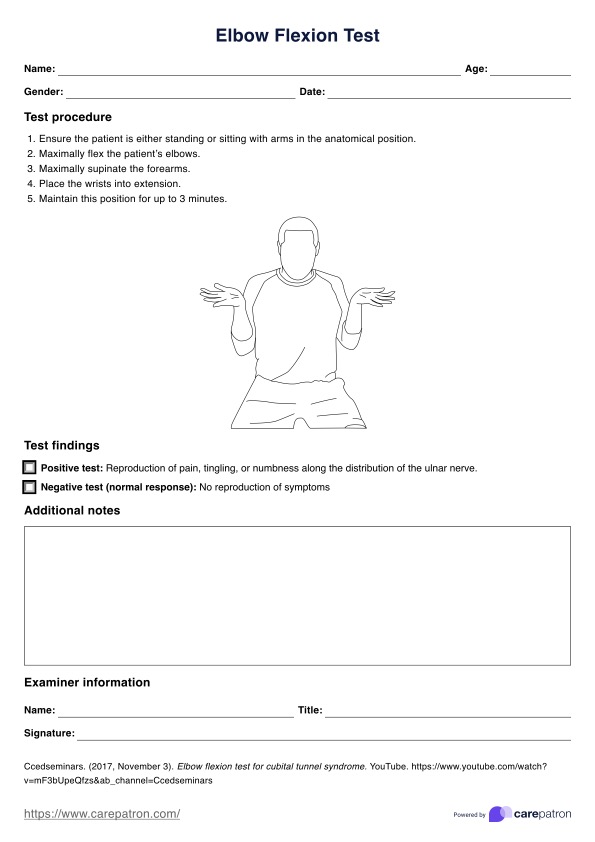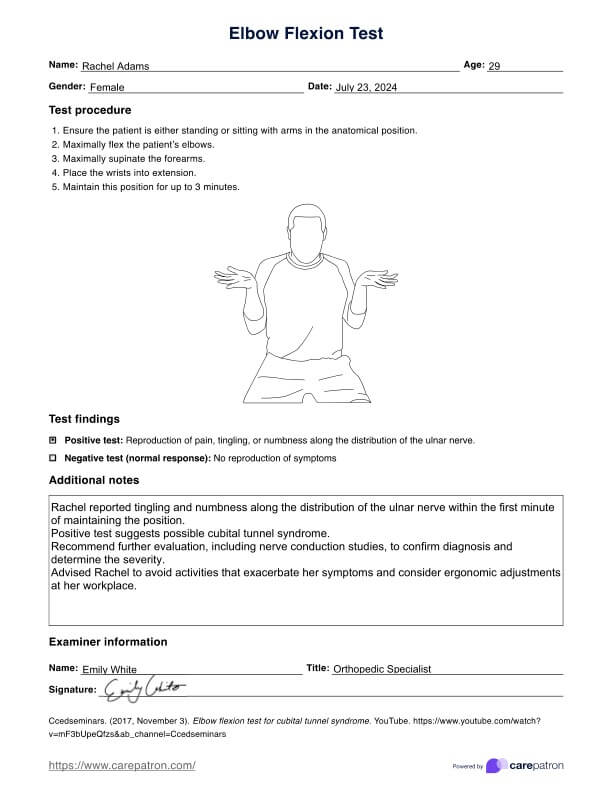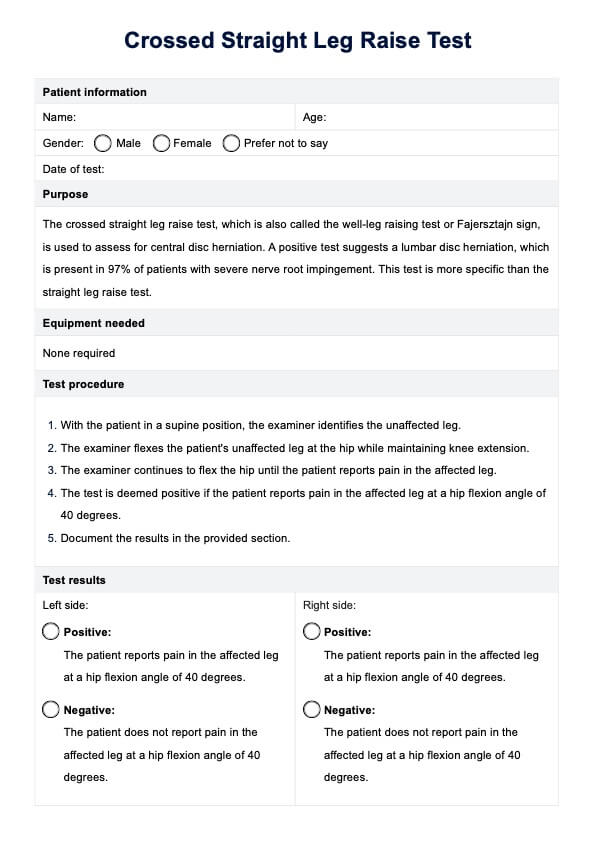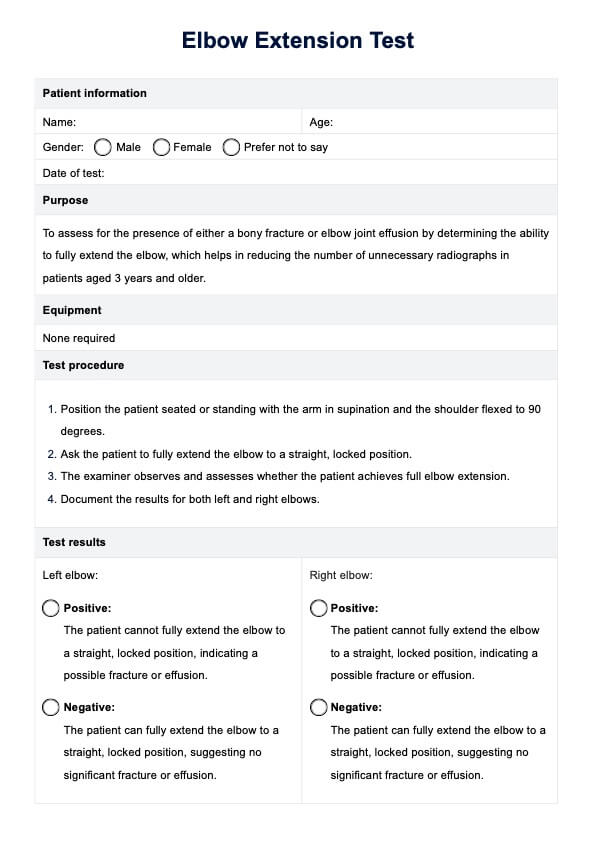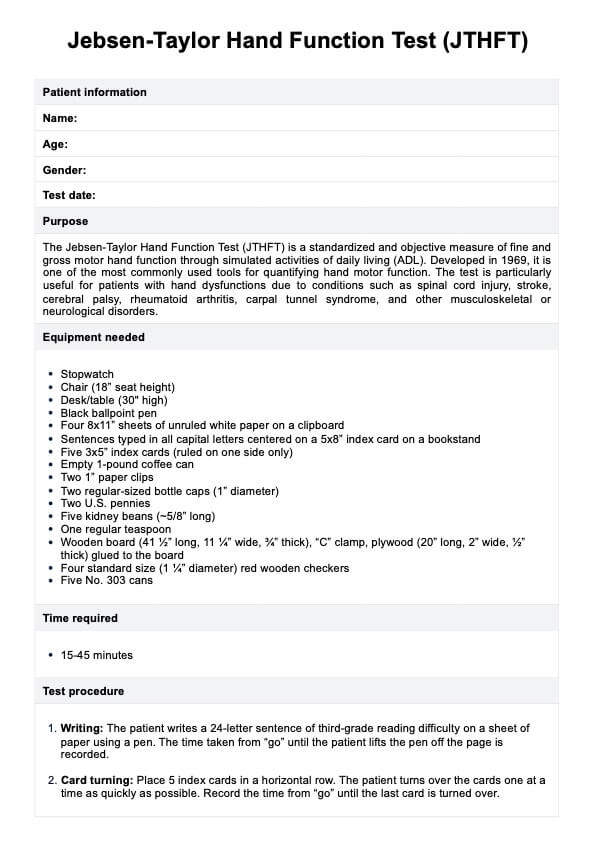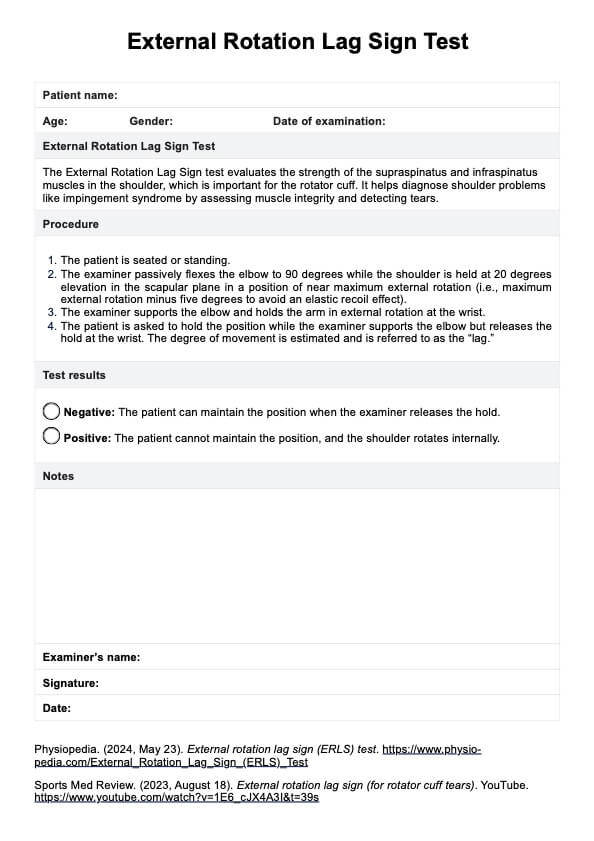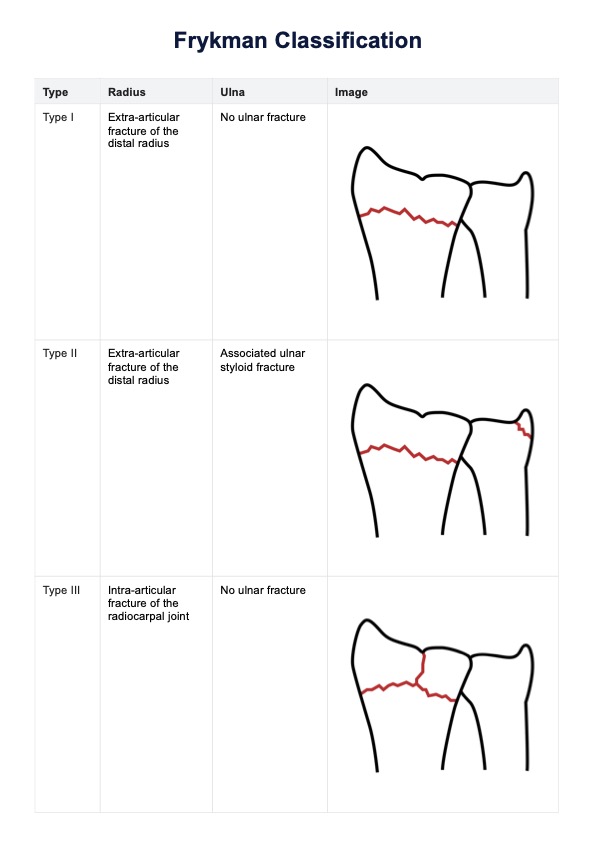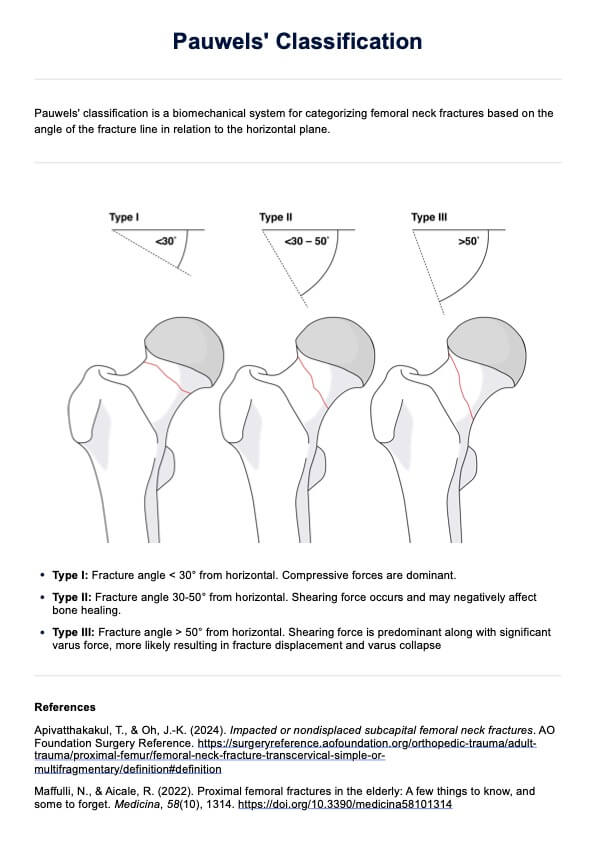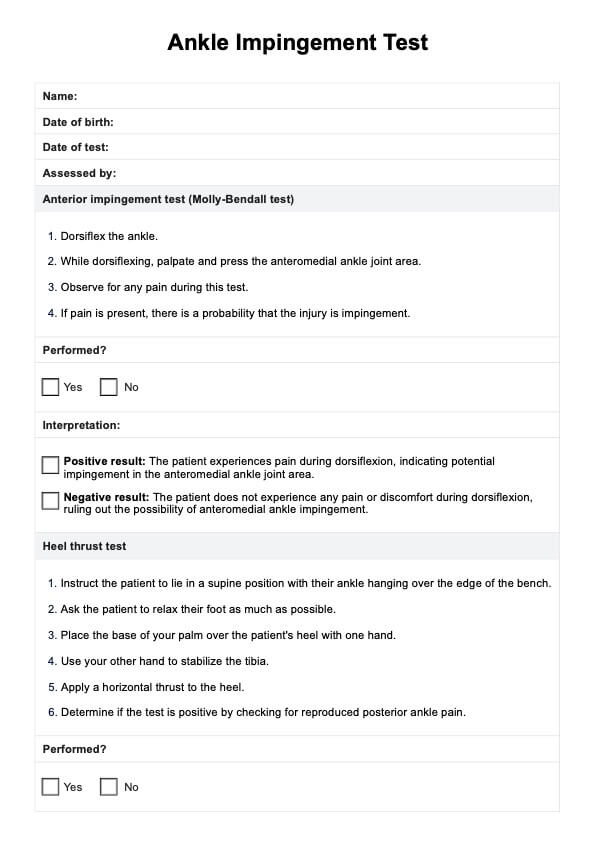Elbow Flexion Test
Learn about the Elbow Flexion Test procedure for cubital tunnel syndrome and treatment options in our guide. Try our template now!


What is cubital tunnel syndrome?
Cubital tunnel syndrome is a condition caused by increased pressure on the ulnar nerve at the elbow. This nerve, also known as the "funny bone" nerve, runs in a groove on the inner side of the elbow. When compressed or irritated, it can lead to symptoms that affect the hand and arm.
Cubital tunnel syndrome is the second most common peripheral nerve entrapment syndrome after carpal tunnel syndrome. It commonly affects individuals who frequently bend their elbows, lean on their elbows, or experience repetitive elbow injury or strain.
Symptoms
Symptoms of cubital tunnel syndrome typically include impaired elbow flexion. It also includes numbness and tingling in the ring and little fingers, a feeling of weakness in the hand, and pain on the inner side of the elbow. In severe cases, it can cause muscle wasting in the hand, leading to decreased grip strength and dexterity.
Causes
Cubital tunnel syndrome can be caused by several factors, including repetitive elbow bending, prolonged pressure on the elbow, direct trauma to the elbow flexors, and anatomical variations that make the nerve more susceptible to compression. Medical conditions like arthritis, diabetes, and thyroid dysfunction can also increase the risk of developing this syndrome.
Occupations that involve repetitive elbow flexion, such as carpenters, assembly line workers, and athletes, especially those involved in throwing sports, are at higher risk. Activities like prolonged phone use with elbows resting on hard surfaces, cycling, and even sleeping with bent elbows can contribute to this condition.
Elbow Flexion Test Template
Elbow Flexion Test Example
What is the Elbow Flexion Test?
The Elbow Flexion Test is a diagnostic tool used to assess for cubital tunnel syndrome, which is caused by compression of the ulnar nerve at the elbow. This test helps to identify the presence of ulnar nerve entrapment by reproducing the symptoms associated with the condition. It also indirectly assess the degree of elbow contracture.
How is this test conducted?
To perform the Elbow Flexion Test, follow these steps:
- Ensure the patient is either standing or sitting with their arms in the anatomical position.
- Maximal flex the patient's elbows.
- Maximal supinate the forearms.
- Help the patient into wrist extension.
- Maintain this position for up to 3 minutes.
The template provided includes an image to help you and your patient find the correct position.
How are the results interpreted?
The results of the Elbow Flexion Test are interpreted based on the patient's symptoms during the test:
If the patient does not experience any pain, tingling, or numbness along the distribution of the ulnar nerve during the 3-minute period, the test is considered negative. This indicates that the ulnar nerve is not compressed at the elbow.
If the patient experiences pain, tingling, or numbness along the distribution of the ulnar nerve during the 3-minute period, the test is considered positive. A positive test suggests the presence of cubital tunnel syndrome, indicating ulnar nerve compression at the elbow or ulnar nerve subluxation.
How to use our Elbow Flexion Test template
Using the Elbow Flexion Test template helps streamline the diagnostic process and ensures all necessary steps and observations are documented accurately. Here's how to use the template effectively:
Step 1: Download the template
First, download or access the Elbow Flexion Test template from the provided link on this page or through the Carepatron app. Ensure you have the template ready before beginning the test.
Step 2: Explain the template and procedure to the patient
Explain the purpose of the test and how it will be conducted to the patient. Familiarize them with the positions they will need to maintain and what sensations they should report.
Step 3: Perform the test
Follow the procedures outlined in the template. Refer to the image in the template to help find the correct position.
Step 4: Document the findings
Record the test findings in the template. Note whether the test was positive or negative and any additional observations. Use the additional notes section for any extra information that might be relevant to the patient’s condition.
Treatments for cubital tunnel syndrome
Treating cubital tunnel syndrome involves a combination of non-surgical and surgical interventions. Here are some common treatments and management strategies:
- Activity modification: Patients are advised to avoid activities that exacerbate symptoms, such as prolonged elbow flexion or resting on the elbow. Ergonomic adjustments at work or during daily activities can also help keep the elbow extended and reduce strain on the ulnar nerve.
- Splinting or bracing: Wearing an elbow splint or brace, especially at night, can help keep the elbow in a neutral position and reduce pressure on the ulnar nerve. This can prevent excessive bending of the elbow during sleep.
- Physical therapy: Specific exercises and stretches can improve the strength and flexibility of the arm and hand muscles. Physical therapy can also help reduce nerve irritation and improve overall arm function.
- Medications: Nonsteroidal anti-inflammatory drugs (NSAIDs) like ibuprofen or naproxen can help reduce inflammation and alleviate pain. In some cases, corticosteroid injections may be used to decrease inflammation around the ulnar nerve.
- Surgical intervention: If conservative treatments fail, surgery may be necessary. Common surgical options include ulnar nerve transposition (moving the nerve to a new position) and medial epicondylectomy (removing part of the bone to relieve pressure on the nerve). The choice of surgery depends on the severity of the condition and the patient's specific needs.
Early diagnosis and appropriate treatment can significantly improve the prognosis for patients with cubital tunnel syndrome, reducing pain and restoring normal arm function.
Commonly asked questions
The elbow flexor muscles include the biceps brachii (the biceps muscle which contains the biceps tendon) in the upper arm, primarily assisted by the brachioradialis and brachialis muscles. These muscles allows flexion at the elbow.
Inability to fully bend from elbow extension at the elbow joint can result from conditions such as joint inflammation, injury, cubital tunnel syndrome, or arthritis.
Elbow flexion is measured using a goniometer, with one arm placed along the humerus and the other along the proximal forearm, then measuring the angle formed when the elbow is bent.
While carpal tunnel syndrome primarily affects the wrist, testing for elbow flexion can help rule out other conditions. The Elbow Flexion Test involves bending the elbow and observing for symptoms like pain or tingling.


